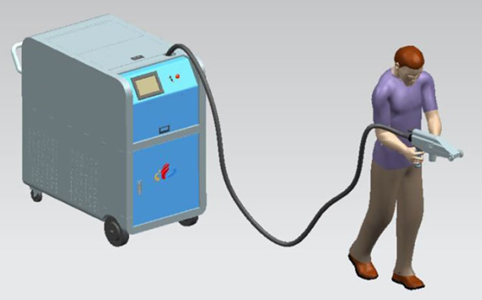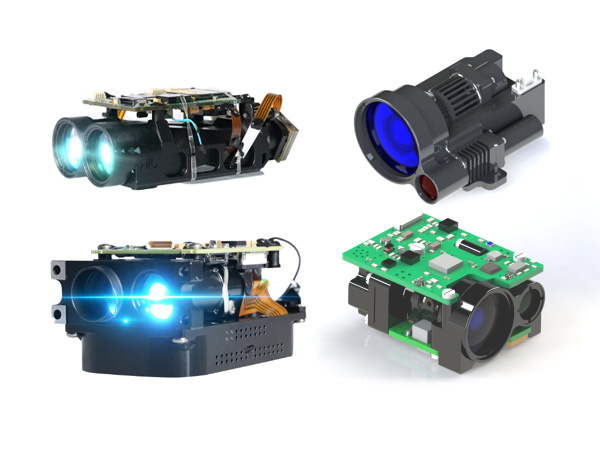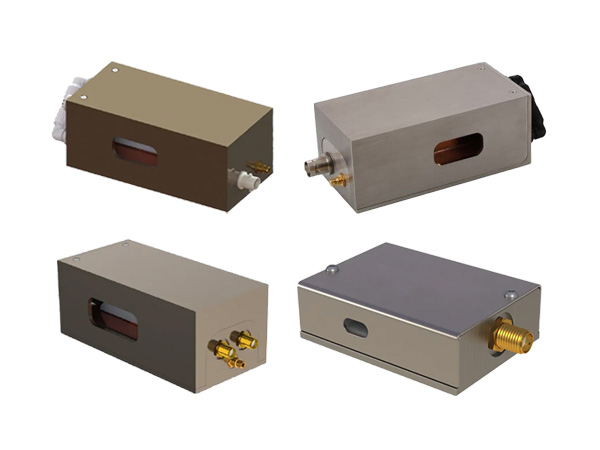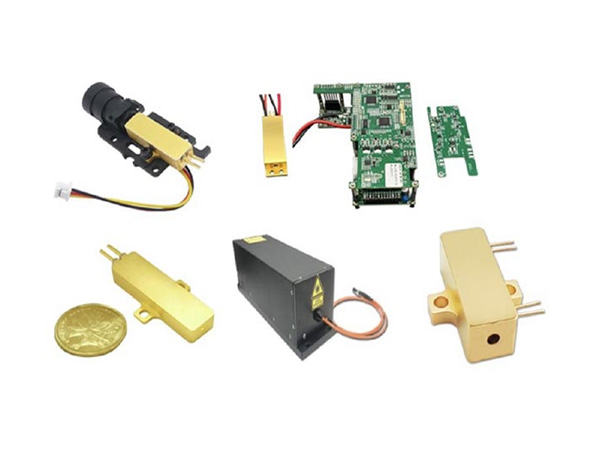[Application] DOEs for Beam Shaping
A diffractive optical element (DOE) uses thin micro-structure patterns to alter the phase of the light that is propagated through it. Those micro-structures, once properly designed, can manipulate the light to almost any desired intensity profile or shape. This technology enables many functions and light manipulations which are not feasible with standard refractive optics.
In many applications, these functions are highly beneficial and improve system performance significantly. Diffractive optical solutions have many advantages such as: high efficiency, high precision, small dimensions, low weight, and, most importantly, are flexible solutions that meet a variety of different applications’ requirements.
There are two main families of DOE products: beam splitters and beam shapers. Optical beam splitter DOEs are used to split a single laser beam into several beams, each of these has the same characteristics as the original beam – except for the power and the angle of propagation.
Optical splitters can generate either a 1-dimensional beam array (1 × N) or a 2-dimensional beam matrix (M × N), depending on the diffractive pattern on the element surface. Beam splitter DOEs can also split the incident beam into interesting spot distributions, such as circles, random, hexagonal arrays, etc. Optical beam splitters are used with monochromatic light (such as a laser beam) and are designed for a specific wavelength and an angle of separation between their output beams.
Beam shaper DOEs are used to transform a near-Gaussian incident laser beam into a uniform-intensity spot of either round, rectangular, square, line, or other shape with sharp edges in a specific work plane. The spot with uniform intensity distribution achieved by the beam shaper enables homogeneous treatment of the surface, preventing over or under-exposure of the specific areas. In addition, the spot is characterized by a sharp transition region that creates a clear border between the treated and untreated area. The beam shaper family includes homogenizers, top-hats, vortex lenses (spiral phase plates) and diffractive axicons.
Typical applications for DOEs
With ever-increasing laser power, many system integrators and users are concerned that their optical element may not withstand the high power incident on it. Thus, the parameter of laser induced damage threshold (LIDT or LDT) becomes an important factor when choosing optical elements. The high LDT of DOEs makes them ideal for uses in high-power industrial systems and applications, the most common are laser material processing applications and laser-based aesthetic treatments, both require powerful lasers.

Fig. 1: Different beam splitter spot distributions, left to right: 5 × 5 array, random, hexagonal array, circle

Fig. 2 : Results of different beam shapes, left to right: homogenizer, top-hat, vortex lens, and diffractive axicon
DOEs in laser-based material processing applications
Recently, the development of new laser systems for industrial needs has increased. Many new processes were developed, and many traditional industrial processes were replaced by laser additive systems. With material processing accounting for a significant share of the total laser market, DOEs play an important role in providing of the process-adapted laser beam shaping. This has made laser beam shaping and homogenization techniques essential to optimize many laser material processing applications. DOEs are commonly used in laser ablation and laser structuring systems, laser drilling, laser cutting, and other modifications to achieve small features on the surface.
DOEs in laser-based aesthetic treatments
As the use of laser technology becomes a more integral tool in the field of aesthetic treatments, the ability to manipulate the output of the laser is increasingly important. DOEs provide a unique solution by allowing for the beam to be manipulated in a myriad of ways, and at the same time are thin and compact. Laser-based aesthetic treatments typically use high-power lasers. It requires uniform and precise exposure of light, with accurately defined, sharp-shaped edges, while enabling high efficiency. This is why using diffractive optics for beam shaping is an ideal solution. DOEs are commonly used in laser hair removal, laser tattoo removal, skin resurfacing, skin rejuvenation, body countering, and many more.
Beam splitting using DOE
The operational principle of beam split- ter DOEs is quite straightforward. From a collimated input beam, the output beam exits from the beam splitter DOE with a separation angle that is determined during the design of the DOE, based on the customer’s system require- ments (Fig. 3). The separation angle is highly accurate ( <0.03 mR error). The beams’ separation is designed for far-field. Therefore, as the beams continue to propagate after the DOE, they become more well-defined (Fig. 4).
A multi-spot has a “zero order” in which there is no diffraction and the beam behaves according to the laws of reflection and refraction. For a stan- dard beam splitter with an odd number of beams, the separation angle is the angle between order +1 and order 0 (the order 0 is a desired beam). For a standard beam splitter with an even number of beams, the separation angle is the angle between order +1 and order –1 (the zeroeth order is not a desired beam).
Beam-splitter DOEs are commonly used in material processing applications (laser ablation, laser perforation, laser drilling, laser welding), aesthetic treatments (skin resurfacing), scientific applications (two-photon fluorescence microscopy, coherent beam combin- ing), and many more.

Fig. 3: Beam splitter DOE, basic set-up with EFL = effective focal length, m = orders (spot) of the multispot, θs = separation angle between two focal spots, d = distance between 2 focal spots (pitch), θf = full angle, D = Length of the spots array

Fig. 4: A 1 × 6 multi-spot propagating in a dispersive media
Beam shaping using DOEs
Diffractive beam shapers are phase elements that transform the Gaussian input beam into uniform spots with sharp edges at a specific working distance. Each beam shaper is designed for specific use with a unique set of optical system parameters: wavelength, input beam size, working distance, and output spot size. The most rudimentary set-up in a beam shaper application consists of a laser, a diffractive beam shaper element and the surface to be treated.
Top-hat beam shaper
The top hat beam is used to transform a near-Gaussian incident laser beam into a uniform intensity (flat) spot of either round, rectangular, square, line, or other shape with sharp edges in a specific work plane. For good quality beam shaper performance, the laser output should be single mode (TEM00) with an M2 value < 1.3. A uniform spot achieved by the beam shaper enables equal treatment to a surface, preventing over- or under-exposure of specific areas. In addition, the spot is characterized by a sharp transition region that creates a clear border between the treated and untreated area. The top hat beam shaper has high efficiency (typically > 95 %), excellent uniformity (typically ±5 %), steep transfer region and high laser damage threshold. In addition, the top-hat beam shaper is sensitive to the input beam size, working distance, and displacement of the element. Top-hat DOEs are commonly used in laser material processing applications (laser ablation, laser cutting, laser drilling), aesthetic treatments (tattoo and hair removal), scientific applications (flow cytometry), and many more.

Fig. 5: Beam shaper DOE, basic set-up with d = shaped spot size, D = beam diameter, and EFL = effective focal length.

Fig. 6: Top-hat intensity distribution, left: square shape, right: round shape
Homogenizer beam shaper
An optical homogenizer DOE trans- forms a single or multi-mode input beam into a well-defined output beam, characterized with a desired shape and homogenized flat top intensity. The most common diffuser shapes are round, square, rectangular, elliptical, and hexagonal. However, almost any shape of image can be designed. The edges of the diffused beam are generally steep and well defined. The ratio between input pergence angle to the homogenizer’s diffusion angle determines the ratio of the transition region to the well-homogenized region of the output beam. A homogenizer DOE splits incident beam in semi-random directions in order to achieve a desired shape of intensity profile in the far field or focal plane. This method enables to design an element that will produce any arbitrary shape, intensity profile with precise angle and size of the output. The diffuser performance strongly depends on the incident beam parameters – uniformity performance may be achieved by using a high M2 input beam (Fig. 7). Homogenizer beam shapers are insensitive to beam size, displacement and tilting of the element. It offers high laser damage threshold, while the uniformity and efficiency vary with the design.
Homogenizer DOEs are commonly used in laser material processing applications (laser welding, laser brazing), aesthetic treatments (tattoo / hair removal, body contouring) and many more.
We developed a new class of diffusers/homogenizers with enhanced performance referred to as the high homogeneity series (Homogeneity can be defined as the average intensity over an area unit). Its advantages are higher homogeneity, and lower zero order. This corresponds well with input beams of lower M2, and for applications where it is impossible to use a Top-Hat beam shaper product.
This DOE design includes two diffractive surfaces. The first decreases the coherence of the incident beam and the second surface shapes the beam.
Advantages and disadvantages of HH relatively to HM are displayed in below table:
Parameter | HH vs HM |
Homogeneity | Much better |
Efficiency | Slightly less |
Transfer region | Larger |
Zero order | Significantly reduced |
This can be illustrated with the below figures (left is HH's image and right is HM's image):

Vortex lens beam shapers
A vortex lens DOE converts a Gauss- ian input profile into a donut-shaped energy ring. The spiral phase plate is a unique optic, whose structure is com- posed entirely of spiral or helical phase steps, whose purpose is to control the phase of the transmitted beam. The total etching depth from the top to bottom of “staircase” is a function of the design wavelength and the substrate’s optical index. Generally, this depth is of the same order of magnitude as the design wavelength. Therefore, each vortex phase plate is wavelength specific. The optical vortex requires as input a collimated single mode (TEM00) Gaussian input beam which it converts to a TEM01 axially-symmetric mode. The advantage of working with a larger input beam is twofold. First, a larger beam reduces somewhat the sensitivity of the output to DOE alignment tolerances. Secondly, a larger input beam will enable achieving a smaller vortex spot, which is often a desired outcome in many applications. The vortex lens has high efficiency (typically >90 %) and high lesser damage threshold. It has sensitivity for displacement and rotation of the element. Vortex lens DOEs are commonly used in material processing applications (welding), optical communication (optical mode conversion and generation), scientific applications (STED microscopy, optical tweezing), and many more.

Fig. 7: Homogenizer performance changes according to M2, left: M2 = 1, right: M2 = 10

Fig. 8: Vortex lens DOE staircase phase
Summary
In recent years, DOEs have become a common and effective technique, and used in a wide spectrum of applications. The main categories DOE are used at are laser material processing applications, aesthetic treatments and also scientific applications. These markets are rapidly growing, and account for a large segment of the entire laser market revenue. With ever-growing laser power and demand for accuracy, DOE are the optimal solution, thanks to its high laser damage threshold and precise performances.
 English
English Français
Français Deutsch
Deutsch euskara
euskara Русский язык
Русский язык Italiano
Italiano Português
Português Nederlands
Nederlands Polski
Polski Greek
Greek Lietuva
Lietuva Türkçe
Türkçe 日本語
日本語 한어
한어 中文
中文 தாமில்
தாமில் فارسی
فارسی हिंदी
हिंदी Tiếng Việt
Tiếng Việt ภาษาไทย
ภาษาไทย Pilipino
Pilipino Indonesia
Indonesia தாமில்
தாமில்





